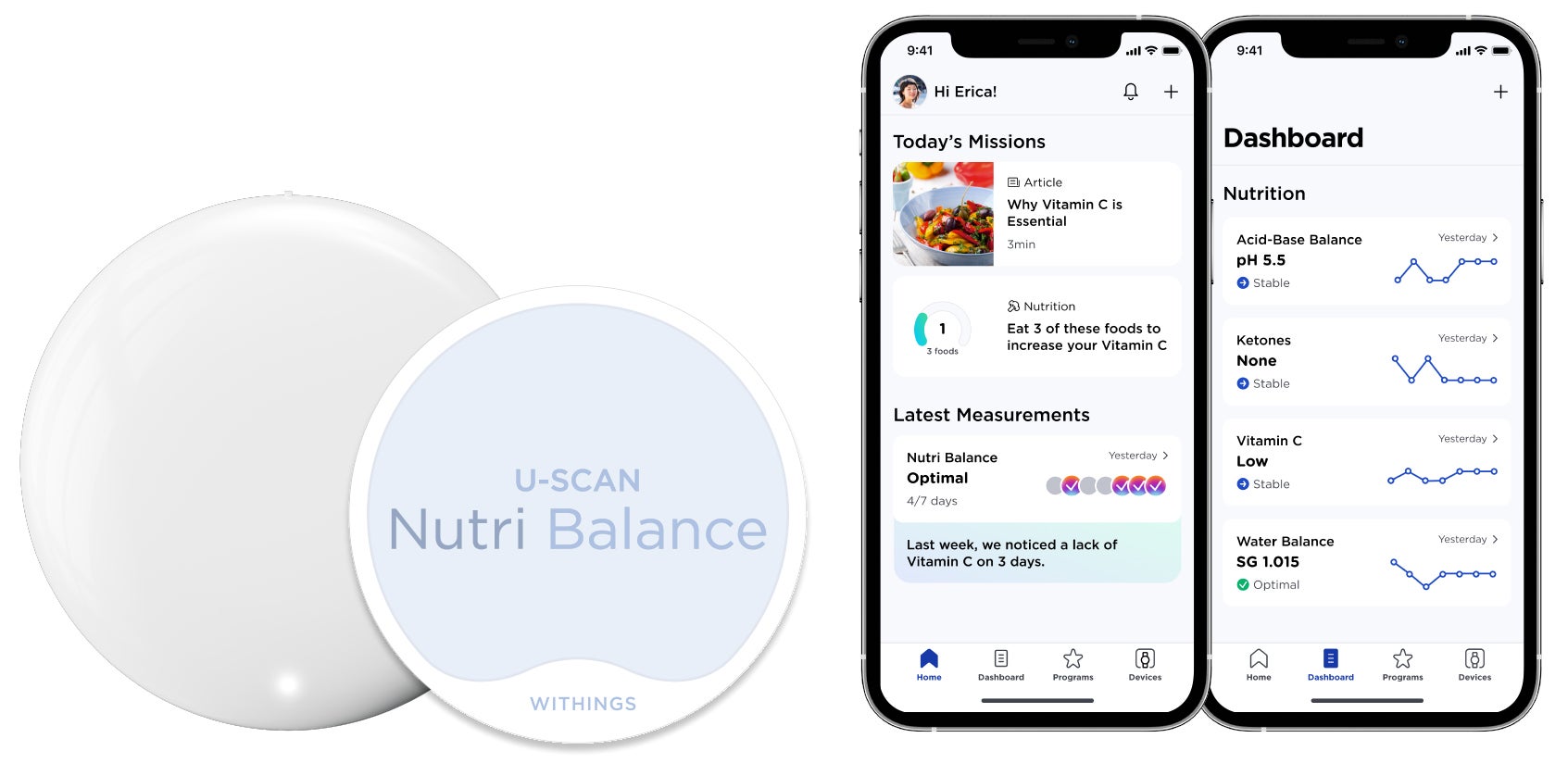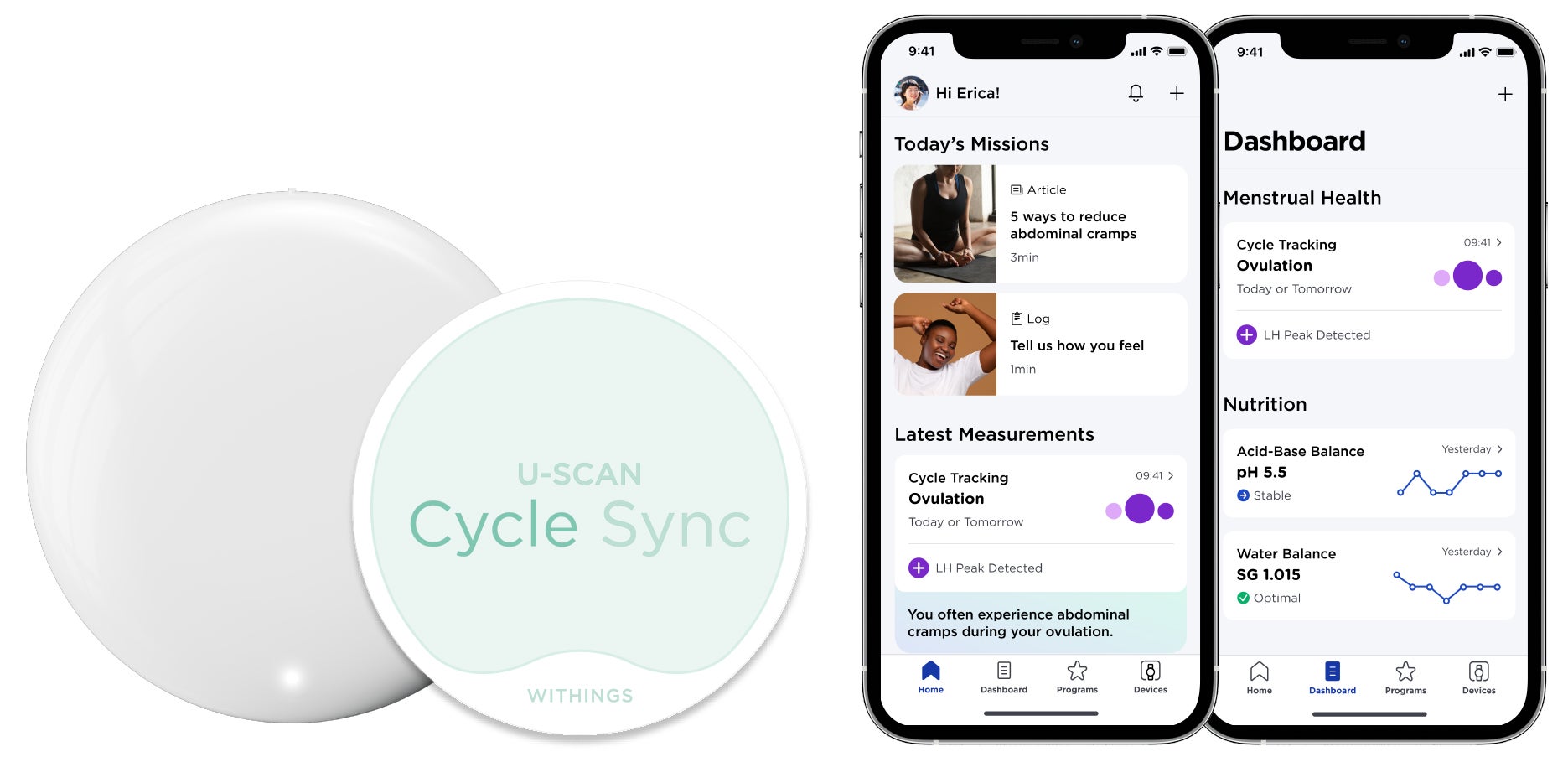You know that extreme paranoia you have about dropping your favourite device in the toilet? Withings wants you to forget all that for its latest health-tracking device, the U-Scan, which is not only specifically designed to be used in a toilet bowl, but to be urinated on as well. Stick with us; it’s not as gross as it sounds.
There’s only so much health information that can be collected from strapping a smartwatch to your wrist, clipping a pulse oximeter to your finger, or wrapping an inflatable blood pressure cuff around your upper arm. That’s why doctors will often order blood samples to be taken or request that patients pee in a cup for detailed urine analysis at a lab before making a diagnosis.
Urine tests that can be performed at home aren’t a new idea, but the info they provide is often limited. Pharmacies sell strips that can be used to test for urinary tract infections, while urine tests remain the cheapest and easiest way to confirm a pregnancy without a trip to the doctor. With the U-Scan, Withings is expanding the health information that can be gleaned from urine without sending it off to a lab, while also making the collection process completely hands-off.

The hardware is reminiscent of Google’s Chromecast dongle, but instead of plugging into a TV’s HDMI port, you hang it in the front of a toilet bowl, where you then deliberately urinate on it. The U-Scan’s smooth, pebble-shaped design funnels urine along its surface down into a collection inlet at the bottom, where a thermal sensor detects the presence of the fluid and activates a pump, which draws the sample inside and through a “microfluidic circuit.” While a user is urinating, a “low-energy radar sensor embedded into the device” can also recognise and distinguish between several users by detecting their “unique urine stream signature” through a feature Withings calls Stream ID.
Inside the U-Scan is a replaceable cartridge, good for about three months, filled with dozens of test pods into which urine is injected. Chemical reactions then occur when one or several biomarkers are detected, producing specific colours that are analysed by an optical sensor. After the test is complete, the remaining fluids are pumped out of the U-Scan and back into the toilet. The device itself is cleaned during every flush, although you still might want to reach for a pair of gloves when swapping cartridges or giving it a charge, which you’ll need to do every three months.
The results of the U-Scan’s tests are shared over wifi to Withings’ private servers and made available through the company’s accompanying mobile apps, which allows the results and each user’s personal health data to be tracked over time. There’s no timeline for when U-Scan will be available in the United States — Withings is still developing it for the US market and it will require FDA clearance first — but the starter kit will go on sale in Europe next year for €499.95 (about US $US530 ($736)) and will include one of two different three-month cartridges, with the option to buy more through a subscription plan or standalone.

The U-Scan Nutri Balance cartridge and app will provide information on a user’s pH, vitamin C, carb balance, and ketone levels to help “monitor their metabolic intake to optimise their daily hydration and nutrients” and recommend “workouts, dietary suggestions, and recipes to achieve identified goals.”

The U-Scan Nutri Balance cartridge and app is instead designed specifically for “cycle tracking, coaching, and journaling” and provides information on “cycle predictions and ovulation window based on hormonal detection alongside key hydration and dietary biomarkers.” The user can also document other symptoms the U-Scan can’t detect, including period flow, mood, food and water intake, and cervical fluids. The hope is that, together, the U-Scan and the journaling will provide more accurate predictions and insights into a user cycle than apps that rely on journaling and self-collected data alone.
